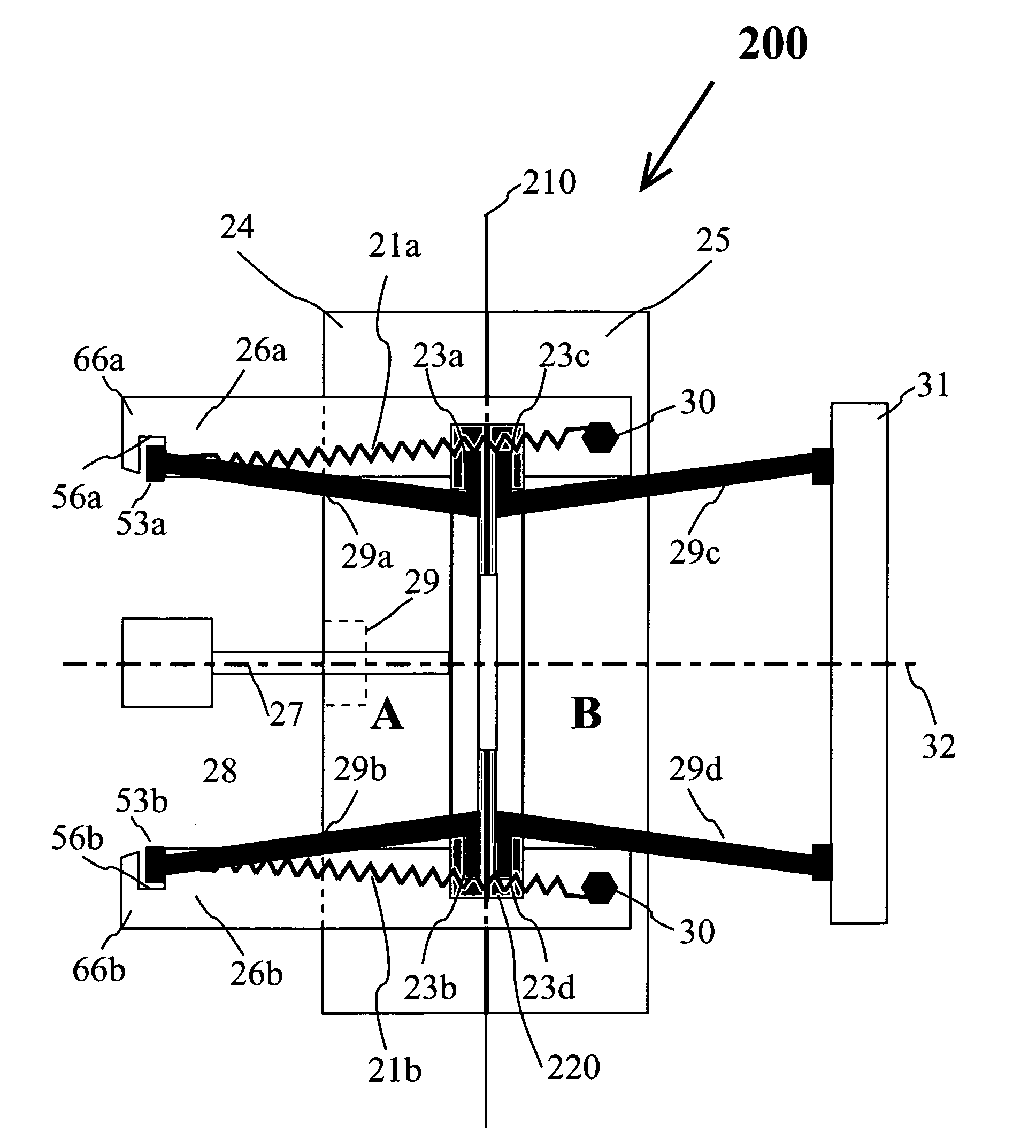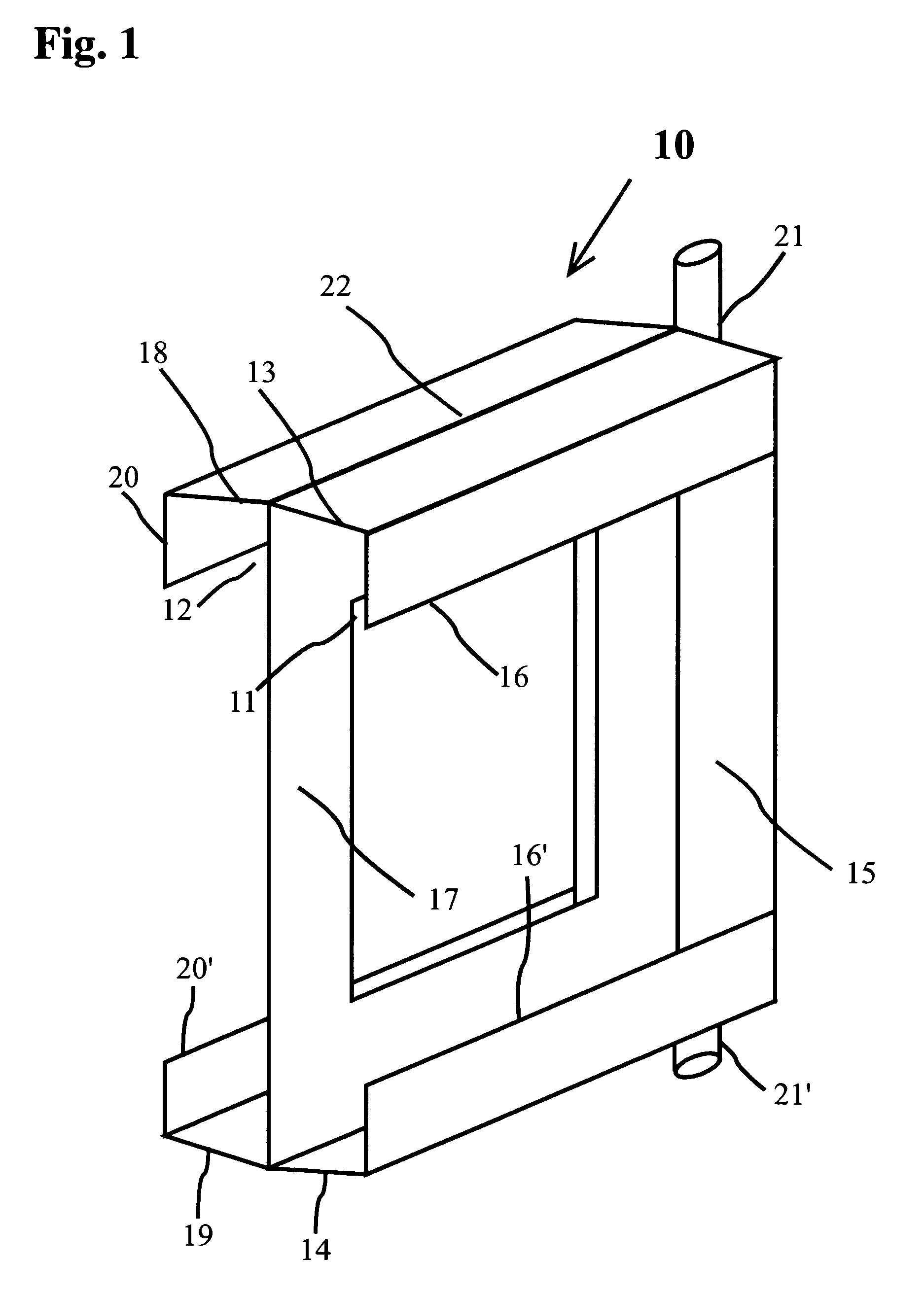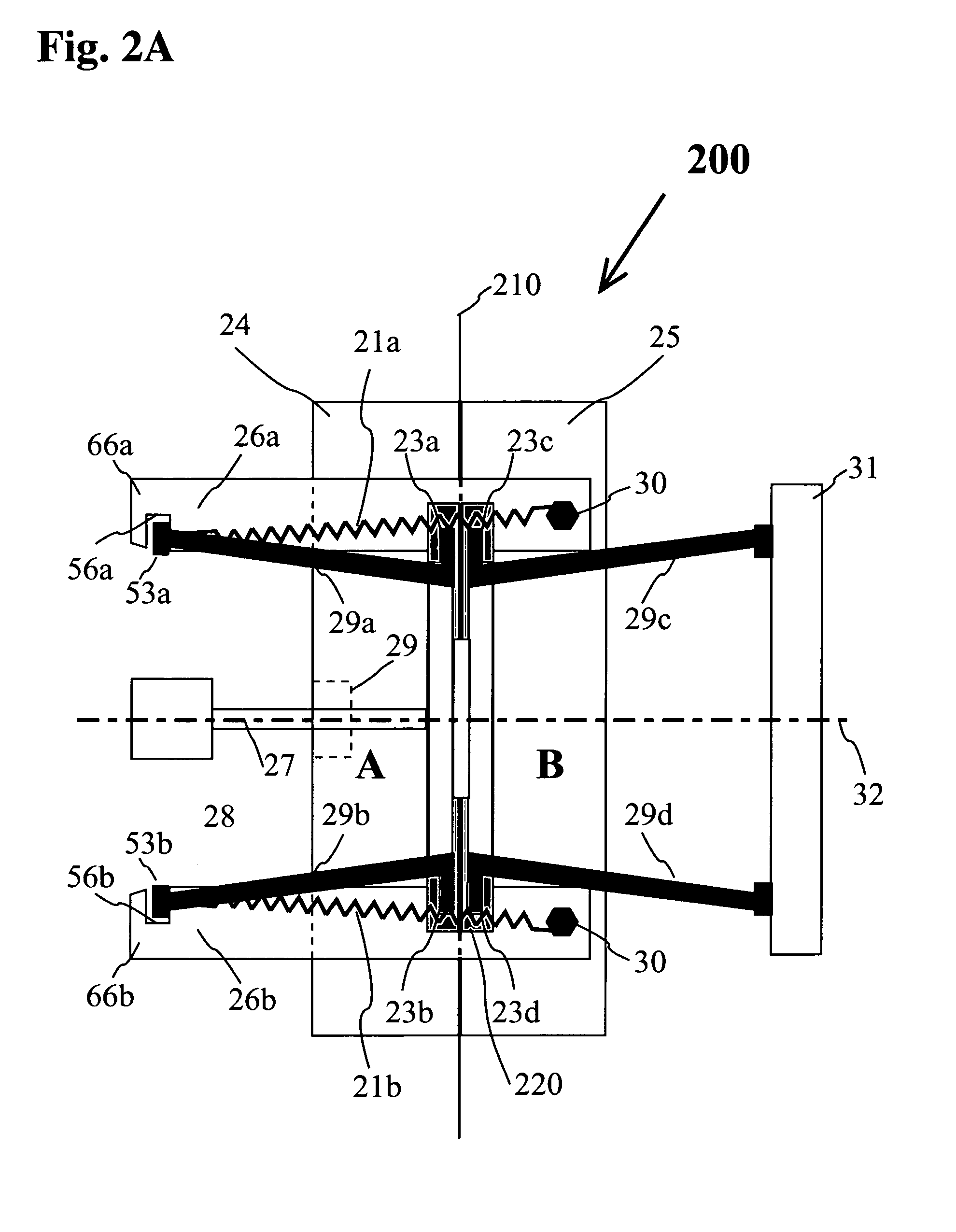Polymeric injection mold with retractable bars for producing re-entrant molded surfaces
a technology of re-entrant molded surfaces and injection molds, which is applied in the direction of dough shaping, application, manufacturing tools, etc., can solve the problem that the mold cannot be easily separated
- Summary
- Abstract
- Description
- Claims
- Application Information
AI Technical Summary
Benefits of technology
Problems solved by technology
Method used
Image
Examples
Embodiment Construction
[0042]Injection molding of polymeric components is easily accomplished by injecting a molten polymer into a mold which has two mating mold halves with a parting line there between. The polymer from the injection molding machine is injected through one half of the mold, which is rigidly attached to the injection molding machine, called the ‘A’ side or the stationary part of the mold. The other side of the mold, the ‘B’ side or the movable part of the mold is movable, wherein the subsequent separation of the mold and actuation of a knock-out plate allows removal of the injection molded polymeric part. The injection mold is typically designed with each surface of the molded part tapered so that the molded part separates easily at the end of molding operation from the mold cavity. Typically, this separation generally requires that the interior surfaces of the mold are not re-entrant. However, there are circumstances when the injection molded polymeric part requires re-entrant surfaces, ...
PUM
| Property | Measurement | Unit |
|---|---|---|
| angle | aaaaa | aaaaa |
| angle | aaaaa | aaaaa |
| angle | aaaaa | aaaaa |
Abstract
Description
Claims
Application Information
 Login to View More
Login to View More - R&D
- Intellectual Property
- Life Sciences
- Materials
- Tech Scout
- Unparalleled Data Quality
- Higher Quality Content
- 60% Fewer Hallucinations
Browse by: Latest US Patents, China's latest patents, Technical Efficacy Thesaurus, Application Domain, Technology Topic, Popular Technical Reports.
© 2025 PatSnap. All rights reserved.Legal|Privacy policy|Modern Slavery Act Transparency Statement|Sitemap|About US| Contact US: help@patsnap.com



